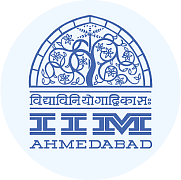CAT Exam > CAT Questions > Gopal borrows Rs. X from Ankit at 8% annual ...
Start Learning for Free
Gopal borrows Rs. X from Ankit at 8% annual interest. He then adds Rs. Y of his own money and lends Rs. X+Y to Ishan at 10% annual interest. At the end of the year, after returning Ankit's dues, the net interest retained by Gopal is the same as that accrued to Ankit. On the other hand, had Gopal lent Rs. X+2Y to Ishan at 10%, then the net interest retained by him would have increased by Rs. 150. If all interests are compounded annually, then find the value of X + Y.
Correct answer is '4000'. Can you explain this answer?
Most Upvoted Answer
Gopal borrows Rs. X from Ankit at 8% annual interest. He then adds Rs...
Amount of interest paid by Ishan to Gopal if the borrowed amount is Rs. (X+Y) = 10/100 * (X + Y) =0.1 (X+Y)
Gopal also borrowed Rs. X from Ankit at 8% per annum. Therefore, he has to return Ankit Rs. 0.08X as the interest amount on borrowed sum.
Hence, the interest retained by gopal = 0.1 (X+Y) - 0.08X = 0.02X + 0.1 Y ... (1)
It is given that the net interest retained by Gopal is the same as that accrued to Ankit.
Therefore, 0.08X = 0.02X + 0.1 Y
=>X = (5/3)Y ...(2)
Amount of interest paid by Ishan to Gopal if the borrowed amount is Rs. (X+2Y) = 10/100 * (X + 2Y) = 0.1X+0.2Y
In this case the amount of interest retained by Gopal = 0.1 X+0.2Y - 0.08X = 0.02X + 0.2Y ... (3)
It is given that the interest retained by Gopal increased by Rs. 150 in the second case.
=>(0.02X + 0.2Y) - (0.02X + 0.1 Y) = 150
=> Y = Rs. 1500
By substituting value of Y in equation (2), we can say that X = Rs. 2500
Therefore, (X+Y) = Rs. 4000.
Free Test
FREE
| Start Free Test |
Community Answer
Gopal borrows Rs. X from Ankit at 8% annual interest. He then adds Rs...
Given:
- Gopal borrows Rs. X from Ankit at 8% annual interest.
- Gopal adds Rs. Y of his own money and lends Rs. XY to Ishan at 10% annual interest.
- At the end of the year, after returning Ankit's dues, the net interest retained by Gopal is the same as that accrued to Ankit.
- If Gopal had lent Rs. X 2Y to Ishan at 10%, then the net interest retained by him would have increased by Rs. 150.
To find:
The value of XY.
Solution:
Let's break down the given information and solve step by step.
Step 1: Interest Accrued by Gopal and Ankit
Let's calculate the interest accrued by Gopal and Ankit separately.
Interest accrued by Gopal:
The interest accrued by Gopal on the amount borrowed from Ankit is given by:
Interest1 = (X * 8%) = 0.08X
Interest accrued by Ankit:
The interest accrued by Ankit on the amount borrowed by Gopal is also 0.08X, as stated in the question.
Step 2: Interest Accrued on Gopal's Loan to Ishan
The interest accrued on the loan amount XY given by Gopal to Ishan at 10% annual interest is given by:
Interest2 = (XY * 10%) = 0.1XY
Step 3: Net Interest Retained by Gopal
After returning Ankit's dues, the net interest retained by Gopal is the same as the interest accrued by Ankit. Therefore, we can equate the two interests:
Interest1 = Interest2
0.08X = 0.1XY
Step 4: Increased Interest by Lending X 2Y
If Gopal had lent Rs. X 2Y to Ishan at 10%, then the net interest retained by him would have increased by Rs. 150. Therefore, the increased interest is given by:
Increased Interest = (0.1 * X * 2Y) - Interest2 = 150
Step 5: Solving for X and Y
Now, we have two equations:
Equation 1: 0.08X = 0.1XY
Equation 2: (0.1 * X * 2Y) - 0.1XY = 150
Simplifying Equation 2:
0.2XY - 0.1XY = 150
0.1XY = 150
XY = 1500
Substituting the value of XY in Equation 1:
0.08X = 0.1 * 1500
0.08X = 150
X = 150 / 0.08
X = 1875
Conclusion:
The value of XY is 1500. Therefore, the correct answer is 4000.
- Gopal borrows Rs. X from Ankit at 8% annual interest.
- Gopal adds Rs. Y of his own money and lends Rs. XY to Ishan at 10% annual interest.
- At the end of the year, after returning Ankit's dues, the net interest retained by Gopal is the same as that accrued to Ankit.
- If Gopal had lent Rs. X 2Y to Ishan at 10%, then the net interest retained by him would have increased by Rs. 150.
To find:
The value of XY.
Solution:
Let's break down the given information and solve step by step.
Step 1: Interest Accrued by Gopal and Ankit
Let's calculate the interest accrued by Gopal and Ankit separately.
Interest accrued by Gopal:
The interest accrued by Gopal on the amount borrowed from Ankit is given by:
Interest1 = (X * 8%) = 0.08X
Interest accrued by Ankit:
The interest accrued by Ankit on the amount borrowed by Gopal is also 0.08X, as stated in the question.
Step 2: Interest Accrued on Gopal's Loan to Ishan
The interest accrued on the loan amount XY given by Gopal to Ishan at 10% annual interest is given by:
Interest2 = (XY * 10%) = 0.1XY
Step 3: Net Interest Retained by Gopal
After returning Ankit's dues, the net interest retained by Gopal is the same as the interest accrued by Ankit. Therefore, we can equate the two interests:
Interest1 = Interest2
0.08X = 0.1XY
Step 4: Increased Interest by Lending X 2Y
If Gopal had lent Rs. X 2Y to Ishan at 10%, then the net interest retained by him would have increased by Rs. 150. Therefore, the increased interest is given by:
Increased Interest = (0.1 * X * 2Y) - Interest2 = 150
Step 5: Solving for X and Y
Now, we have two equations:
Equation 1: 0.08X = 0.1XY
Equation 2: (0.1 * X * 2Y) - 0.1XY = 150
Simplifying Equation 2:
0.2XY - 0.1XY = 150
0.1XY = 150
XY = 1500
Substituting the value of XY in Equation 1:
0.08X = 0.1 * 1500
0.08X = 150
X = 150 / 0.08
X = 1875
Conclusion:
The value of XY is 1500. Therefore, the correct answer is 4000.

|
Explore Courses for CAT exam
|

|
Similar CAT Doubts
Gopal borrows Rs. X from Ankit at 8% annual interest. He then adds Rs. Y of his own money and lends Rs. X+Y to Ishan at 10% annual interest. At the end of the year, after returning Ankit's dues, the net interest retained by Gopal is the same as that accrued to Ankit. On the other hand, had Gopal lent Rs. X+2Y to Ishan at 10%, then the net interest retained by him would have increased by Rs. 150. If all interests are compounded annually, then find the value of X + Y.Correct answer is '4000'. Can you explain this answer?
Question Description
Gopal borrows Rs. X from Ankit at 8% annual interest. He then adds Rs. Y of his own money and lends Rs. X+Y to Ishan at 10% annual interest. At the end of the year, after returning Ankit's dues, the net interest retained by Gopal is the same as that accrued to Ankit. On the other hand, had Gopal lent Rs. X+2Y to Ishan at 10%, then the net interest retained by him would have increased by Rs. 150. If all interests are compounded annually, then find the value of X + Y.Correct answer is '4000'. Can you explain this answer? for CAT 2025 is part of CAT preparation. The Question and answers have been prepared according to the CAT exam syllabus. Information about Gopal borrows Rs. X from Ankit at 8% annual interest. He then adds Rs. Y of his own money and lends Rs. X+Y to Ishan at 10% annual interest. At the end of the year, after returning Ankit's dues, the net interest retained by Gopal is the same as that accrued to Ankit. On the other hand, had Gopal lent Rs. X+2Y to Ishan at 10%, then the net interest retained by him would have increased by Rs. 150. If all interests are compounded annually, then find the value of X + Y.Correct answer is '4000'. Can you explain this answer? covers all topics & solutions for CAT 2025 Exam. Find important definitions, questions, meanings, examples, exercises and tests below for Gopal borrows Rs. X from Ankit at 8% annual interest. He then adds Rs. Y of his own money and lends Rs. X+Y to Ishan at 10% annual interest. At the end of the year, after returning Ankit's dues, the net interest retained by Gopal is the same as that accrued to Ankit. On the other hand, had Gopal lent Rs. X+2Y to Ishan at 10%, then the net interest retained by him would have increased by Rs. 150. If all interests are compounded annually, then find the value of X + Y.Correct answer is '4000'. Can you explain this answer?.
Gopal borrows Rs. X from Ankit at 8% annual interest. He then adds Rs. Y of his own money and lends Rs. X+Y to Ishan at 10% annual interest. At the end of the year, after returning Ankit's dues, the net interest retained by Gopal is the same as that accrued to Ankit. On the other hand, had Gopal lent Rs. X+2Y to Ishan at 10%, then the net interest retained by him would have increased by Rs. 150. If all interests are compounded annually, then find the value of X + Y.Correct answer is '4000'. Can you explain this answer? for CAT 2025 is part of CAT preparation. The Question and answers have been prepared according to the CAT exam syllabus. Information about Gopal borrows Rs. X from Ankit at 8% annual interest. He then adds Rs. Y of his own money and lends Rs. X+Y to Ishan at 10% annual interest. At the end of the year, after returning Ankit's dues, the net interest retained by Gopal is the same as that accrued to Ankit. On the other hand, had Gopal lent Rs. X+2Y to Ishan at 10%, then the net interest retained by him would have increased by Rs. 150. If all interests are compounded annually, then find the value of X + Y.Correct answer is '4000'. Can you explain this answer? covers all topics & solutions for CAT 2025 Exam. Find important definitions, questions, meanings, examples, exercises and tests below for Gopal borrows Rs. X from Ankit at 8% annual interest. He then adds Rs. Y of his own money and lends Rs. X+Y to Ishan at 10% annual interest. At the end of the year, after returning Ankit's dues, the net interest retained by Gopal is the same as that accrued to Ankit. On the other hand, had Gopal lent Rs. X+2Y to Ishan at 10%, then the net interest retained by him would have increased by Rs. 150. If all interests are compounded annually, then find the value of X + Y.Correct answer is '4000'. Can you explain this answer?.
Solutions for Gopal borrows Rs. X from Ankit at 8% annual interest. He then adds Rs. Y of his own money and lends Rs. X+Y to Ishan at 10% annual interest. At the end of the year, after returning Ankit's dues, the net interest retained by Gopal is the same as that accrued to Ankit. On the other hand, had Gopal lent Rs. X+2Y to Ishan at 10%, then the net interest retained by him would have increased by Rs. 150. If all interests are compounded annually, then find the value of X + Y.Correct answer is '4000'. Can you explain this answer? in English & in Hindi are available as part of our courses for CAT.
Download more important topics, notes, lectures and mock test series for CAT Exam by signing up for free.
Here you can find the meaning of Gopal borrows Rs. X from Ankit at 8% annual interest. He then adds Rs. Y of his own money and lends Rs. X+Y to Ishan at 10% annual interest. At the end of the year, after returning Ankit's dues, the net interest retained by Gopal is the same as that accrued to Ankit. On the other hand, had Gopal lent Rs. X+2Y to Ishan at 10%, then the net interest retained by him would have increased by Rs. 150. If all interests are compounded annually, then find the value of X + Y.Correct answer is '4000'. Can you explain this answer? defined & explained in the simplest way possible. Besides giving the explanation of
Gopal borrows Rs. X from Ankit at 8% annual interest. He then adds Rs. Y of his own money and lends Rs. X+Y to Ishan at 10% annual interest. At the end of the year, after returning Ankit's dues, the net interest retained by Gopal is the same as that accrued to Ankit. On the other hand, had Gopal lent Rs. X+2Y to Ishan at 10%, then the net interest retained by him would have increased by Rs. 150. If all interests are compounded annually, then find the value of X + Y.Correct answer is '4000'. Can you explain this answer?, a detailed solution for Gopal borrows Rs. X from Ankit at 8% annual interest. He then adds Rs. Y of his own money and lends Rs. X+Y to Ishan at 10% annual interest. At the end of the year, after returning Ankit's dues, the net interest retained by Gopal is the same as that accrued to Ankit. On the other hand, had Gopal lent Rs. X+2Y to Ishan at 10%, then the net interest retained by him would have increased by Rs. 150. If all interests are compounded annually, then find the value of X + Y.Correct answer is '4000'. Can you explain this answer? has been provided alongside types of Gopal borrows Rs. X from Ankit at 8% annual interest. He then adds Rs. Y of his own money and lends Rs. X+Y to Ishan at 10% annual interest. At the end of the year, after returning Ankit's dues, the net interest retained by Gopal is the same as that accrued to Ankit. On the other hand, had Gopal lent Rs. X+2Y to Ishan at 10%, then the net interest retained by him would have increased by Rs. 150. If all interests are compounded annually, then find the value of X + Y.Correct answer is '4000'. Can you explain this answer? theory, EduRev gives you an
ample number of questions to practice Gopal borrows Rs. X from Ankit at 8% annual interest. He then adds Rs. Y of his own money and lends Rs. X+Y to Ishan at 10% annual interest. At the end of the year, after returning Ankit's dues, the net interest retained by Gopal is the same as that accrued to Ankit. On the other hand, had Gopal lent Rs. X+2Y to Ishan at 10%, then the net interest retained by him would have increased by Rs. 150. If all interests are compounded annually, then find the value of X + Y.Correct answer is '4000'. Can you explain this answer? tests, examples and also practice CAT tests.

|
Explore Courses for CAT exam
|

|
Signup for Free!
Signup to see your scores go up within 7 days! Learn & Practice with 1000+ FREE Notes, Videos & Tests.
























